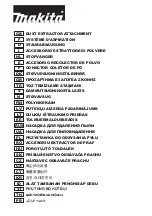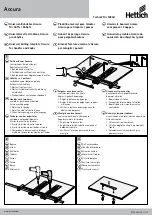
________________________________________________________________________
XDI200 Manual Version 0.1
- Page 79 -
©2017 Electromotive, Inc.
WinTec software, a failure code does not necessarily indicate a failed sensor (i.e. the failure
parameters may be set incorrectly).
As an example, let’s look at the Throttle Position Sensor Parameters. Before the
parameters can be entered into the software, it is necessary to know the TPS voltage at both fully
closed and wide open throttle. This can be observed in the monitor screen by opening and
closing the throttle (without the engine running). If the closed throttle voltage was 1.0 volt and the
wide open throttle voltage was 4.6 volts, the TPS parameters should be set as follows:
TPS Fully Closed Throttle Voltage:
1.1 Volts
TPS Wide Open Throttle Voltage:
4.5 Volts
TPS High Voltage Failure (0-5V):
4.8 Volts
TPS Low Voltage Failure (0-5 V):
0.8 Volts
TPS Failure Default Value (0-5V):
1.5 Volts
As can be seen, the
Fully Closed Throttle Voltage
setting is actually a bit above the
actual closed throttle voltage (1.1V > 1.0V). This is done because the Idle Speed Control will only
start working when the TPS reading is below the
Fully Closed Throttle Voltage
setting. The
Low Voltage Failure
setting is made a few tenths of a volt lower than the actual closed throttle
voltage (1.0V > 0.8V). This is done to display code 22 for throttle position sensors that have
either rotated in their mount or have failed completely by outputting a lower-than-expected
voltage. Likewise, the
High Voltage Failure
setting is made a few tenths of a volt higher than the
observed wide open throttle voltage. This will allow code 21 to be displayed in the event of a high
voltage failure. The
Failure Default Value
is the voltage that the
XDI200
will use for its TPS-
based calculations when the TPS sensor has failed. Since this is a fixed value, there will be no
TPS-based acceleration enrichments when the TPS has failed. However, the Failure Default
Value is useful for applications using the TPS-MAP Blend feature because it defines a fixed
amount of TPS to blend with the MAP sensor during a TPS failure.
9.3.2 Wiring the Check Engine Light
The check engine light output gives a pull-to-ground for a light bulb. Pin on the
XDI200
’s
gray connector is the pink wire for the check engine light. The circuit should not be allowed to
flow more than 0.25 Amps, which dictates that a light bulb of 3 Watts or less should be used. See
Figure 110
for wiring instructions.
Figure 110:
Wiring diagram for the check engine output.
or LED
















































